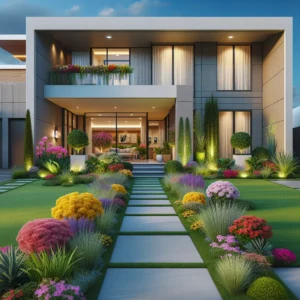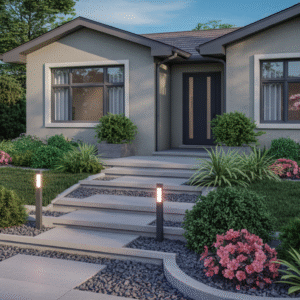Are you dreaming of a serene, eco-friendly backyard oasis? A natural swimming pool might be exactly what you’re looking for! Unlike traditional pools, natural swimming pools use aquatic plants and biological filtration to keep the water clean, creating an experience that’s as refreshing as swimming in a natural lake.
In this detailed guide, we will walk you through the entire process of building your own natural swimming pool, from why you should choose one to how to maintain it after construction.
Why Choose a Natural Swimming Pool?
Natural swimming pools have grown in popularity for several reasons. First and foremost, they’re an eco-friendly alternative to traditional pools. They don’t rely on harsh chemicals like chlorine, which can be harmful to both the environment and your skin. Instead, natural pools use aquatic plants to filter the water, mimicking the natural processes of a pond or lake.
With natural swimming pools, you get a cleaner, healthier swimming experience that’s also visually stunning. Imagine swimming in crystal-clear water surrounded by lush plants—there’s nothing quite like it. Not only will you enjoy a beautiful swimming environment, but you’ll also be contributing to a more sustainable way of living.
How Much Does a Natural Swimming Pool Cost?
The cost of building a natural swimming pool can vary greatly depending on several factors. On average, you can expect to pay anywhere from $30,000 to $100,000 or more, especially in places like the United States. However, in countries like Mexico, the costs are typically lower.
The cost factors to consider include:
- The size and shape of your pool
- The type of materials (concrete, plastic liner, etc.)
- The integration of solar heating or other features
- The cost of the regeneration zone (water garden)
- Your location and local labor rates
It’s important to note that natural swimming pools tend to be larger than traditional pools due to the necessity of a regeneration zone.
How to Design Your Natural Swimming Pool
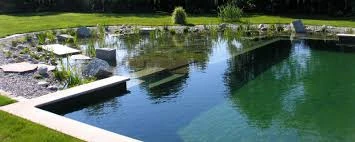
The design phase is crucial because it determines everything about your pool’s functionality and aesthetic. Here are the steps to get started:
- Determine Size and Shape: Decide how large you want your swimming area to be. In a natural pool, the swimming zone should ideally be at least half the size of the regeneration zone (the area with the plants that purify the water).
- Plan the Regeneration Zone: This is where plants and microorganisms will filter the water. It’s important to make this zone large enough to support the ecosystem.
- Include Features: Will your pool have solar heating, waterfalls, or an infinity edge? These design features add beauty and functionality but should be thoughtfully integrated into the pool’s overall design.
- Select Plants: Choose the right plants for your regeneration zone. Water lilies, cattails, and lotus are some of the most popular choices for a natural swimming pool.
Natural Swimming Pool Construction
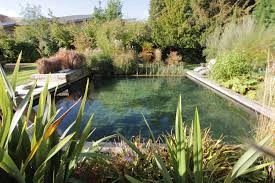
Once your design is finalized, it’s time to begin construction. The process can take several months, so be prepared for a long but rewarding journey. The main stages of construction include excavation, foundation laying, and building the filtration system.
Building the Concrete Floor and Walls

The first step in construction is to dig the hole for your pool. Depending on your land, you may encounter challenges like rocky terrain, which can slow down the process. Once the excavation is complete, the pool’s concrete floor and walls are constructed.
For a natural swimming pool, you will need to build a strong, durable base. Concrete is often the preferred material because it provides stability and can be shaped to fit your design. Rebar is placed for reinforcement, and then the concrete is poured to form the pool’s structure.
Lava Rock is a Natural for a Natural Swimming Pool
When designing the exterior of the pool, lava rock is often chosen for its natural beauty and durability. Lava rock can be used as a decorative edging for the pool, blending seamlessly with the surrounding landscape.
Lava rock is also great for creating the feel of a natural, earthy environment, enhancing the pool’s overall aesthetic. It’s a perfect material for anyone who wants their pool to feel like a natural pond or lake.
Painting a Natural Swimming Pool
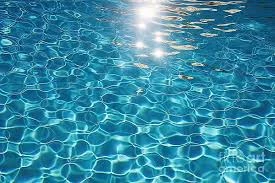
Once the pool’s concrete structure is in place, the next step is painting the interior of the pool. Many natural swimming pools are painted black to mimic the look of a natural pond. The dark color also helps retain heat, which is especially useful if you’re using solar heating.
Painting a pool can take time, so make sure you leave enough time for the paint to dry properly before moving on to the next steps.
Setting up the Water Garden and Regeneration Zone
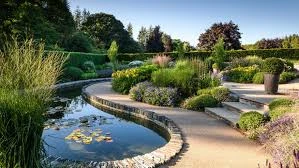
The regeneration zone is the heart of a natural swimming pool’s filtration system. This is where aquatic plants and organisms purify the water. It’s essential to establish this zone properly, with plants like papyrus, cattails, and lotus.
A good filtration system will keep your pool clean without relying on chemicals. The regeneration zone should also have proper water circulation to avoid stagnant water, which could lead to issues with algae or mosquitoes.
How to Combat Mosquitoes

Mosquitoes can be a concern when building a natural swimming pool, especially during the initial filling stages. If water sits still for too long, it can become a breeding ground for mosquitoes. To combat this, make sure to keep the water moving.
You can use organic mosquito control products like Mosquito Dunks to eliminate larvae without harming the ecosystem. Additionally, adding fish that eat mosquito larvae, such as koi or guppies, can help keep the problem at bay.
Fish in the Natural Swimming Pool
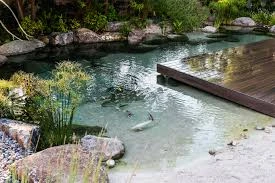
Adding fish to your natural swimming pool can contribute to the ecosystem by controlling algae and mosquito populations. Koi fish are a popular choice, as they thrive in the regeneration zone and add a beautiful touch to your pool’s environment.
Fish help maintain the balance of your pool’s ecosystem, but they also add a peaceful, natural element to the overall design. Keep in mind that the fish should be placed in the regeneration zone to avoid overcrowding the swimming area.
Filling Your Natural Swimming Pool
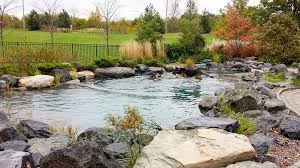
Filling the pool is one of the most exciting steps, but it can take time. It’s important to gradually add water to ensure the ecosystem gets established correctly. During this process, the water may look cloudy. This is normal and will clear up as the plants start filtering the water.
Make sure the water stays circulating through the filtration system to prevent stagnation. It’s also important to be patient as the pool fills up.
Here Come the Water Garden Plants!

Once the pool is filled, it’s time to add the plants to the regeneration zone. Water lilies, cattails, papyrus, and other aquatic plants are essential for filtering the water. These plants will establish themselves in the regeneration zone over time, creating the natural filtration system that keeps your pool clean.
At first, there may be an abundance of plants. As the system matures, the plant life will settle into a natural balance, and some plants may be removed as they are no longer needed.
The Long View
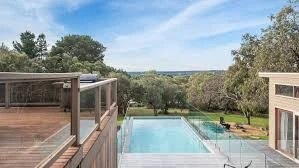
After the pool is filled and the plants are established, it’s important to take a long-term view. The ecosystem will continue to evolve, and it’s essential to maintain the balance of the plants, fish, and water circulation. With time, your pool will become a self-sustaining system that requires minimal maintenance.
The black-painted bottom, aquatic plants, and the surrounding landscape will begin to blend together, creating a truly natural swimming pool experience that you can enjoy for years to come.
Cost of Building Natural Swimming Pools
While the cost of building a natural swimming pool can vary, the overall expense is often comparable to that of a traditional pool. In the U.S., the cost for a high-quality natural swimming pool can run upwards of $100,000, depending on size and features. In other regions, like Mexico, the cost is much lower, with some pools being built for around $25,000.
Your natural swimming pool’s cost will depend on factors like size, materials, and the features you include. However, the investment is worth it for the long-term benefits, including lower maintenance costs and the joy of having a chemical-free swimming experience.
Conclusion
Building a natural swimming pool may take time and effort, but the result is a beautiful, eco-friendly oasis that’s worth every step. From designing and planning to filling and maintaining the pool, you’ll create a self-sustaining system that blends beautifully with nature. Are you ready to take the plunge into the world of natural swimming pools? Start your project today and enjoy a refreshing, sustainable swimming experience!
If you have any questions or need further tips on building a natural swimming pool, feel free to reach out. Happy swimming!

